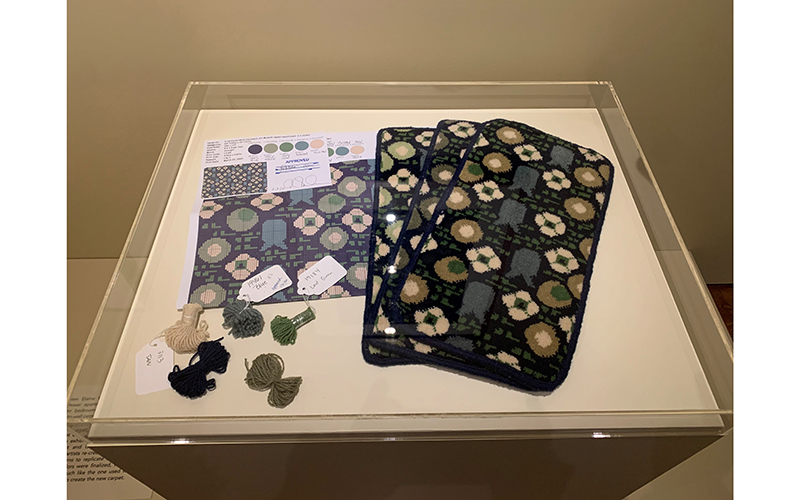- Events & Programs Home
- Calendar
- Accessibility
- Adults
-
Families & Teens
- Families & Teens Home
- 10x10 Teen Art Expo
- Art on the Rise
- Art Together: Art Making for Families with Children Ages 3–5
- Babies Sing with May Festival Minis
- Boy Scouts / Girl Scouts
- CAM Kids Day
- Family Storytime and Gallery Walk
- Family Studio: Art Making for Families with Children Ages 6–12
- Games in the Galleries
- Members-Only Baby Tours
- Public Baby Tours
- REC Reads
- Rosenthal Education Center (REC)
- Saturday Morning Art Class
- See Play Learn Kits
- Summer Camp
- Teen Fest: Zine and Comic Exchange
- RECreate
- Teachers
- Community Outreach
- Fundraisers
- Plan Your Own Event

- Events & Programs Home
- Calendar
- Accessibility
- Adults
-
Families & Teens
- Families & Teens Home
- 10x10 Teen Art Expo
- Art on the Rise
- Art Together: Art Making for Families with Children Ages 3–5
- Babies Sing with May Festival Minis
- Boy Scouts / Girl Scouts
- CAM Kids Day
- Family Storytime and Gallery Walk
- Family Studio: Art Making for Families with Children Ages 6–12
- Games in the Galleries
- Members-Only Baby Tours
- Public Baby Tours
- REC Reads
- Rosenthal Education Center (REC)
- Saturday Morning Art Class
- See Play Learn Kits
- Summer Camp
- Teen Fest: Zine and Comic Exchange
- RECreate
- Teachers
- Community Outreach
- Fundraisers
- Plan Your Own Event
Carpet Samples
Carpet Samples
- Home
- Plan Your Visit
- Art
-
Events & Programs
- Events & Programs Home
- Calendar
- Accessibility
- Adults
-
Families & Teens
- Families & Teens Home
- 10x10 Teen Art Expo
- Art on the Rise
- Art Together: Art Making for Families with Children Ages 3–5
- Babies Sing with May Festival Minis
- Boy Scouts / Girl Scouts
- CAM Kids Day
- Family Storytime and Gallery Walk
- Family Studio: Art Making for Families with Children Ages 6–12
- Games in the Galleries
- Members-Only Baby Tours
- Public Baby Tours
- REC Reads
- Rosenthal Education Center (REC)
- Saturday Morning Art Class
- See Play Learn Kits
- Summer Camp
- Teen Fest: Zine and Comic Exchange
- RECreate
- Teachers
- Community Outreach
- Fundraisers
- Plan Your Own Event
- Give & Join
- About
- Tickets
- Calendar
- Exhibitions
- Collections
- Blog
- Shop
- Art
- Exhibitions
- What, Me Worry? The Art and Humor of MAD Magazine
- Recall. Reframe. Respond. The Art of Paul Scott
- Rediscovered Treasures
- Special Features
- Upcoming Exhibitions
- Past Exhibitions
- Online Exhibitions
- Explore the Collection
- Provenance and Cultural Property
- Conservation
- Meet the Curators
- Digital Resources
- Art Bridges Cohort Program

Recreated carpet design pattern shown with test sample weaving and custom-dyed yarns
Verbal Description
Hello, my name is Rick Young and I am a Gallery Attendant at the museum. I will be reading the verbal description for the Carpet Samples in Unlocking an Art Deco Bedroom by Joseph Urban.
These reproduction Carpet Samples from 2022 are wool. They were created by the American Langhorne Carpet Company, which was established in 1930. They are after a design by Joseph Urban, an Austrian-born American who lived from 1872 to 1933.
This is a sample of the carpet reproduced for the Wormser bedroom. The carpet is decorated with a design of abstracted flowers, circles, and fish-shaped forms in blue, green, and beige on a black ground.
Label Copy
Hello, my name is Rick Young and I am a Gallery Attendant at the museum. I will be reading the label for the Carpet Samples in Unlocking an Art Deco Bedroom by Joseph Urban.
These reproduction Carpet Samples from 2022 are wool. They were created by the American Langhorne Carpet Company that was established in 1930. They are after a design by Joseph Urban, an Austrian-born American who lived from 1872 to 1933
Astonishingly, when Elaine Wormser moved out of her family’s Drake Tower apartment, she took most of the elements from her bedroom with her—including a large portion of the wall-to-wall carpet. To avoid the potential stress and damage that might result from installing the remaining portions of the original carpet, the museum collaborated with the Langhorne Carpet Company to create a reproduction floor covering for this exhibition. Referencing a fragment of the original carpet and Urban’s original watercolor sketch for the pattern, artists re-created the carpet design and custom-matched yarns to replicate its original colors. Once the design and colors were finalized, weavers used a large industrial loom, much like the one used when the original carpet was made, to create the new carpet.
Cincinnati, OH 45202
Toll Free: 1 (877) 472-4226
Museum Hours
Museum Shop
Terrace Café
Library
Cincinnati Art Museum is supported by the tens of thousands of people who give generously to the annual ArtsWave Campaign, the region's primary source for arts funding.

Free general admission to the Cincinnati Art Museum is made possible by a gift from the Rosenthal Family Foundation. Exhibition pricing may vary. Parking at the Cincinnati Art Museum is free.
Generous support for our extended Thursday hours is provided by Art Bridges Foundation’s Access for All program.

General operating support provided by:



